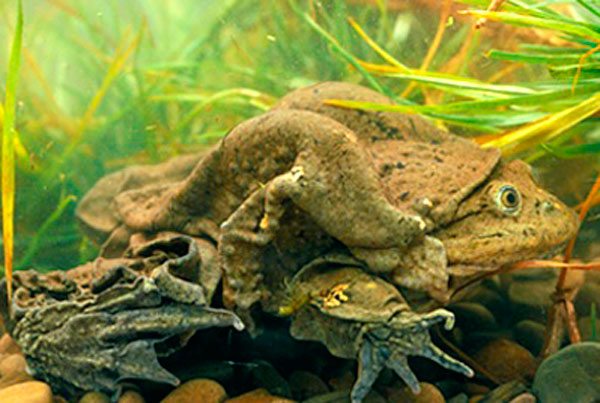Telmatobius culeus frog
Telmatobius culeus, commonly known as the Titicaca water frog, is a very large and critically endangered species of frog in the family Telmatobiidae. It is entirely aquatic and only found in Lake Titicaca and rivers that flow into this lake in South America. While the lungs are greatly reduced, this frog has excessive amounts of skin, used to help the frog respire in the high altitude in which it lives.
In reference to its excessive amounts of skin, it has also jokingly been referred to as the Titicaca scrotum water frog.
In the early 1970s, an expedition led by Jacques Cousteau reported frogs up to 50 centimetres (20 in) in outstretched length, with individuals commonly weighing 1 kilogram (2.2 lb), making these some of the largest exclusively aquatic frogs in the world (the fully aquatic Batrachophrynus macrostomus is larger, as is the African goliath frog, which sometimes can be seen on land). The snout-vent length is 7.5–13.8 centimetres (3.0–5.4 in).
Conservation status
Once common, the Titicaca water frog has declined drastically and is now facing extinction due to over-collecting for human consumption, pollution, and predation of tadpoles by introduced trout. It may also be threatened by the disease chytridiomycosis. Several other species in the genus Telmatobius are facing similar risks.
source - Wikipedia
if u like the post please like and shear



0 comments